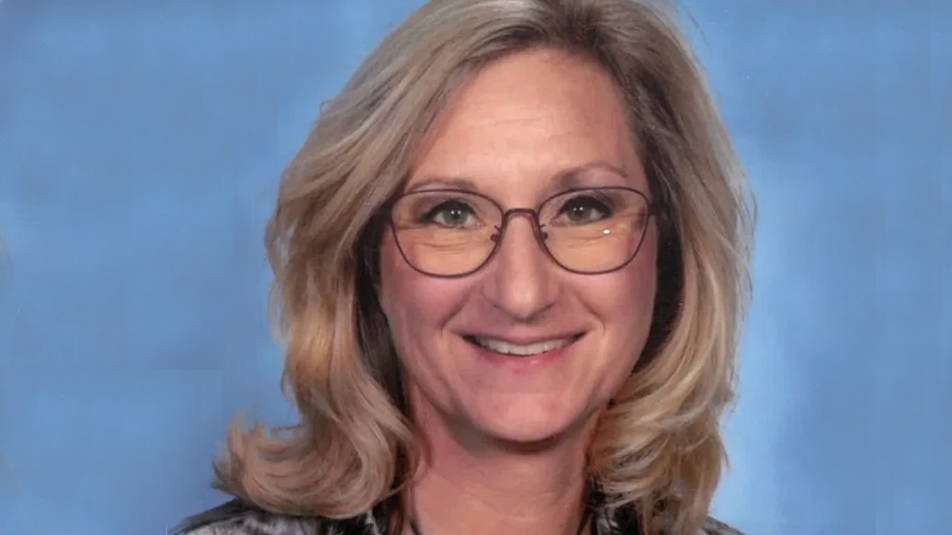This is the fifth in a series of guest blogs by the 2023-24 Michigan Regional Teachers of the Year. Jennifer Senkmajer is a fourth-grade teacher at Yale Elementary School in Yale Public Schools.
One of the greatest pleasures in teaching is the joy that comes from being a part of our students’ journey … of witnessing creativity, fostering curiosity and the success borne of struggle.
In the past few years, I have noticed a shift in the demeanor of my students. Generally, they are more emotionally fragile than they have been in the past. In the post-COVID years, we, as educators, find ourselves compensating for the loss of stamina and confidence our students are experiencing. Students worry about making mistakes and tackling challenging content, struggling to persevere in the face of uncertainty.
When I was a student, risk-taking was not a consideration in the school systems. We sat in rows, followed directions, did our work and took our graded papers home each week. However, the World Economic Forum cites creative thinking, resilience and flexibility, curiosity and analytical thinking among the top 10 skills needed in the workplace (weforum.com, May 1, 2023). As educators, now more than ever, it is time to be innovative in our classrooms.
What Does Risk-Taking Look Like
In a class where students feel comfortable taking risks, students are self-aware. They ask both peers and adults for help. The fear of “being wrong” vanishes as students see themselves as learners, not just pencil pushers. In a “courageous classroom” students include others in the learning process. They invite others into their conversations, coach one another and celebrate both success and failure. They are persistent and determined to find solutions to problems.
One of my absolute favorite moments in my classroom was with a class that began as a timid group. During a science unit, they became curious about a child who invented a device that changed the way his community lived. We decided to create our own invention using “found items'' from home, so groups created a vehicle that would be powered by a balloon.
The conversations among students were incredible! From start to finish, the students demonstrated a trust for one another that I hadn't seen from them in the past. They were asking questions, testing ideas, using science-specific terms, defending their thinking and compromising on ideas. When the moment of truth came to test our designs, the anticipation was palpable. We gathered around, and the first group shared their design ideas. They let the balloon go. All we heard was the sound of the air escaping from the balloon. To my horror, not so much as a centimeter of movement had occurred.
Imagine my shock and delight when the room (including the inventors of the vehicle) erupted in LAUGHTER. Each consecutive group ran their test, only to find that the greatest distance any vehicle moved was a few millimeters. But never a tear was shed, and the room filled with questions about how they could modify the axles or reposition the balloon. Words of encouragement were shouted out as the entire room chanted for the final group, “Move that car! Move that car!”
This group of students felt safe with one another, had experienced the joy of curiosity and creativity, and they were ready to dust off and revise their thinking. The activity I had planned for two class periods quickly turned into four class periods, conversations with family members and my own teenage son building a vehicle for my students to test. That’s education gold!
Fostering Resilience
So, how can you foster resilience in your own classroom? Risk-taking is more likely to occur when students and adults trust and feel respected by one another. It takes courage to admit that we don’t have all the answers.
In class when students share their answers, we don’t just talk about the correct answers. Instead, we talk about where they got off track and what changes they’d like to make in their thinking. Learning becomes more about possibilities than about right and wrong. Students are asked, “How many of you coached or were coached by your partner?” or “Who learned something from their partner?”
Reflection is incredibly powerful. When students are regularly given the opportunity to look back and revise, conversations begin to take on a new level of thinking. When students ask questions, they need to be encouraged to explore and find out more. I love having a conversation with a student who is excited about a topic and deciding we will both go home and learn more about it so we can talk more the next day!
Other ways to foster a mindset for growth include providing learning opportunities with multiple paths to a solution. STEM challenges offer a wealth of opportunities for this. While some STEM challenges require a fair amount of planning and time to execute, there are many Internet resources for quick STEM projects that allow just a few minutes of planning and a few minutes of testing. Additionally, I have been planning open-ended tasks as I learn about Peter Liljedahl’s Building Thinking Classrooms.
Finally, I urge you to not only fail with your students. Fail for them. Model vulnerability. They need to see you as an authentic learner, a fellow human who understands uncertainty and can empathize with them as they explore the reaches of POSSIBILITY. When I was in my mid-40s, I took up a martial art with my family. Sharing the journey to black belt with my students was life changing. Students were fascinated to learn about my fears, my failures, and my achievements.
When our students know we are courageous and resilient, that we are not always right, and that we find joy in learning, they trust that we are leading them down a path worth discovering. Our classrooms come alive with motivated students, ready to persevere in facing challenges together.

